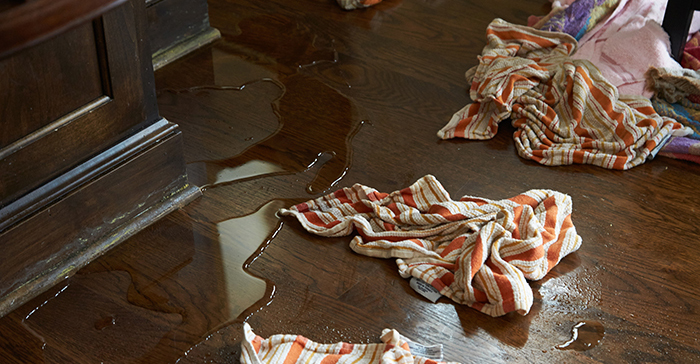Searching for Indications of Water Damage in the Bathroom
Searching for Indications of Water Damage in the Bathroom
Blog Article
The writer is making several great pointers on How to Fix a Water Damage Bathroom in general in this post further down.

The bathroom is very vulnerable for wet accumulation and also prospective water damages because of the frequent use water in it. This article uses simple examination techniques to aid spotting water damages risks.
The constant use of water in the washroom makes it incredibly at risk for moist buildup and prospective water damages. By examining it on a regular basis, you can decrease water relevant damages.
The complying with collection of evaluations is very easy to perform as well as need to be done once in every 3 months in order to maintain your washroom in good shape as well as to avoid possible water damages caused by the tub, the shower, pipeline joints and also plumbing, sinks, cabinets, and the bathroom
Do not disregard executing these inspections and be comprehensive while doing them. Remember that these straightforward inspections can conserve you a lot of money by offering early indicators for water damages
Sinks as well as Cabinets
Sinks and cupboards are subjected to dampness and humidity everyday as well as are usually overlooked. Examine frequently under the sink and also on the kitchen counter over it. Repair any drip in the trap as it may recommend drainpipe troubles. Check out the sink, slow draining pipes may indicate a blocked drain. Replace sink seals if they are split or loosened.
Bath tub and also Shower
The shower and also bath tub call for unique focus and maintenance. Check the floor tiles and also change if fractured. Make sure that there is no missing out on cement between the tiles. Inspect and change fractured caulking at joints where the wall surfaces satisfy the floor or the bathtub. Clogged drains pipes as well as pipes problems will protect against the bath tub from drying out as well as may indicate significant troubles underneath the bathtub. Consult with a specialist quickly to avoid structural damage. Take notice of stainings or soft areas around the bathtub wall surfaces as they might indicate an inner leakage.
Plumbing
Signs for water damage are hard to identify considering that most pipelines are installed inside the wall surfaces.
Pay special focus to floor covering and wall surfaces moisture and also stains as they might indicate an unseen plumbing problem. Examine moisture degrees in adjoining spaces as well.
The Commode
The toilet is a prone water junction. Inspect the water lines as well as look for leaks around the bathroom seat, in the tube, and under the water storage tank. If you detect any type of indicators of moisture on the floor around the bathroom, look for leaks in the toilet rim and also tank seals.
Understand that hanging commode bowl antiperspirants enhances the opportunities for clogs.
10 TIPS TO PREVENT WATER DAMAGE IN THE BATHROOM
The average household uses approximately 80-100 gallons of water per person per day. For a family of 4, that's almost 2,500 gallons of water a week! The largest portion of this consumption comes from bathroom use. Flushing the toilet uses the most water, followed by taking a shower or bath. With that much water running through the home, water damage in the bathroom is bound to happen. Knowing how to spot signs of a water leak is essential to preventing long-term damage. This guide provides you with tips to reduce the impact of water damage on your bathroom.
CAUSES OF BATHROOM WATER DAMAGE
Pipe breaks are the most common cause of water damage we see in our daily jobs. The age of a pipe plays a large role in a pipe break as well as corrosion. Over time, the metal begins to break down, allowing water to escape. Frozen pipe breaks are also a concern in the winter months. Toilet overflows caused by paper products or children flushing inappropriate items. Degraded caulking around the toilet or bathtub can allow water seepage, sometimes behind the fixture, into the subfloor or walls. Condensation forms when the water in a pipe is cooler than the air temperature. Beads of water form on the exterior of the pipes, sometimes so much so that the water begins to drip and pool below. Sink or shower backups created by poor drainage. HOW TO PREVENT WATER DAMAGE IN YOUR BATHROOM
Inspect your toilet supply line for worn or frayed hoses and replace them as needed. Winterize your plumbing to prevent a frozen pipe break. Use vent fans to prevent condensation that can lead to mold growth. Routinely check and replace degraded caulking around your toilet or bathtub. Increase the temperature in your toilet tank and insulate your pipes during the warm summer months to keep condensation from forming. Use child safety locks on the toilets. Flush only toilet paper. "Flushable" wet wipes are actually not good for your plumbing system. Additionally, feminine hygiene products should not be flushed. Prevent water from escaping the tub or shower. Make sure shower curtains are in good condition. Inspect shower doors and replace the seal strip if necessary. Wipe up any water that accumulates on the floor and use bath mats. Water left to sit can cause damage to the tiles and flooring. Refrain from using bath products containing heavy oils to avoid a clogged drain.

As a serious reader on Preventing Water Damage in the Bathroom, I figured sharing that article was sensible. Don't hesitate to take a moment to distribute this entry if you appreciated it. I appreciate reading our article about Looking for Signs of Water Damage in the Bathroom.
Request An Appointment Report this page